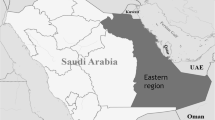Abstract
Coxiella burnetii, the etiological agent of Q-fever has recently been isolated from sheep in southern Sweden. In this region 24–30% of sheep farmers have been exposed to the organism as shown by serological measurements. In veterinarians, another group with high risk of exposure to C. burnetii, about 12% have antibodies to the bacteria. The seropositive veterinarians are scattered all over the country. In two non-risk groups, draftees and hospital employees, 5–7% were found to be positive. This survey showed that Q-fever is a domestic disease which is spread throughout Sweden.
Similar content being viewed by others
References
AitkenL.D. (1987): Q-fever in the United Kingdom and Ireland - Zentralbl. Bakteriol. Hyg. A. 267:37–41.
AitkenL.D., BögelK., CraceaE., EdlingerE., HouwersD., KraussH., RadyM., RehacekJ., SchieferH.G., SchmeerN., TarasevichI.Y. and TringaliG. (1987): Q-fever in Europe: Current aspects of aetiology, epidemiology, human infection, diagnosis and therapy - Infection 15: 323–327.
AkessonÅ., MacellaroÅ., TüllP., WilliamsJ.C. and NorlanderL. (1991): Epidemiology of Q-fever in Sweden - Scand. J. Infect. Dis. 23: 153–157.
AkessonÅ., KraussH., ThieleD.H., MacellaroÅ., SchwanO. and NorlanderL. (1991): Isolation of C. burnetii in Sweden - Scand. J. Infect. Dis. 23: 273–274.
DupuisG., PetiteJ., OlivierP. and VouillozM. (1987): An outbreak of human Q-fever in a Swiss alpine valley - Int. J. Epidemiol. 16: 282–287.
JormL.R., LightfootN.E. and MorganK.L. (1990): An epidemiological study of an outbreak of Q-fever in a secondary school - Epidemiol. Infect. 104: 282–287.
KindmarkC.-O., Nyström-RosanderC., FrimanG., PeacockM. and VeneS. (1985): The first human case of domestic Q-fever in Sweden - Acta Med. Scand. 218: 429–432.
KraussH. (1987): Epidemiology and significance of Q-fever in the Federal Republic of Germany -Zentralbl. Bakteriol. Hyg. A. 267: 42–50.
LaemmliU.K. (1970): Cleavage of structural proteins during the assembly of the head of bacteriophage T4- Nature 227: 680–685.
LuftB.J., GorevicP.D., JiangW., MunozP. and DattwylerR.J. (1991): Immunological and structural characterization of the dominant 66 - to 73-KDa antigens of Borrelia burgdorferi - J. Immunol. 146: 2276–2782.
MarrieT.J. (1990): Q-fever a review - Can. Vet. J. 31: 555–563.
MurrayP.J. and YoungR.A. (1992): Stress and immunological recognition in host-pathogen interactions - J. Bakteriol. 174: 4193–4196.
RehacekJ. (1987): Epidemiology and significance of Q-fever in Czechoslovakia - Zentralbl. Bakteriol. Hyg. A. 267: 16–19.
WHO Weekly Epidemiol. Record (1991): Q-fever in 1988–1989 33: 247.
Author information
Authors and Affiliations
Rights and permissions
About this article
Cite this article
Macellaro, A., Akesson, A. & Norlander, L. A survey of Q-fever in Sweden. Eur J Epidemiol 9, 213–216 (1993). https://doi.org/10.1007/BF00158795
Issue Date:
DOI: https://doi.org/10.1007/BF00158795




